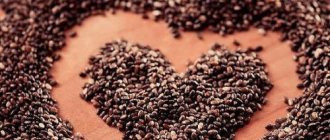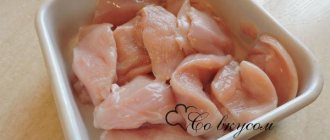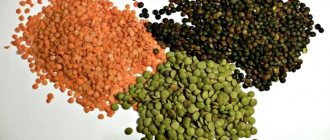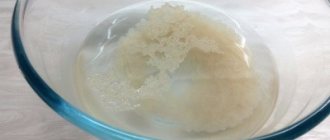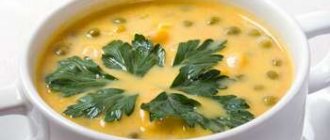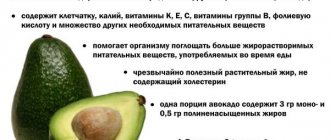© Vladislav Nosik — stock.adobe.com
Share:
An unusual grain, bulgur is crushed wheat grains that have been dried, steamed and stripped of their shells. It has a softer and more pleasant taste compared to other cereals.
Bulgur is a filling and nutritious product. It is not only tasty, but also healthy. The chemical composition of the cereal has a beneficial effect on the body, improving the functioning of all organs and systems. Cereals contain a large amount of fiber, which helps cleanse the intestines of waste and toxins.
Regular consumption of bulgur saturates the body with vitamins and microelements, increases vitality and increases performance. Bulgur porridge is suitable for sports nutrition and provides energy during intense training.
Calorie content and composition of bulgur
Bulgur is a high-calorie product. 100 g of dry mixture contains 342 kcal. In its finished form, after boiling in water without the use of other ingredients, bulgur contains 83 kcal per 100 g of product.
The calorie content of boiled bulgur with butter is 101.9 kcal per 100 g of finished serving.
Nutritional value of dry mixture:
- proteins – 12.29 g;
- fats – 1.33 g;
- carbohydrates – 63.37 g;
- water – 9 g;
- dietary fiber – 12.5 g.
Nutritional value of cooked bulgur:
- proteins – 3.1 g;
- fats – 0.2 g;
- carbohydrates – 14.1 g.
The ratio of proteins, fats and carbohydrates in cereals is 1:0.1:5.2, respectively.
During heat treatment, bulgur does not lose useful elements. In dietary nutrition, porridge is used, cooked in water without adding oil.
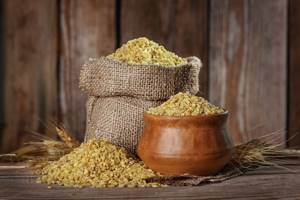
© iprachenko — stock.adobe.com
Vitamin composition
Bulgur contains the following vitamins:
| Vitamin | Quantity | Benefits for the body |
| Beta carotene | 0.005 mg | Synthesizes vitamin A, has an antioxidant effect, promotes tissue regeneration, improves vision, strengthens the immune system. |
| Lutein | 220 mcg | Improves vision, lowers cholesterol, prevents blood clots. |
| Vitamin B1, or thiamine | 0.232 mg | Participates in carbohydrate, fat and protein metabolism, promotes nervous stimulation, protects cells from toxic effects. |
| Vitamin B2, or riboflavin | 0.115 mg | Strengthens the nervous system, participates in metabolism and the formation of red blood cells, protects mucous membranes. |
| Vitamin B4, or choline | 28.1 mg | Strengthens the nervous system, removes toxins, restores liver cells. |
| Vitamin B5, or pantothenic acid | 1.045 mg | Participates in the formation of antibodies, in the oxidation of fatty acids and carbohydrates, promotes the synthesis of glucocorticoids, normalizes the functioning of the nervous system, and improves skin condition. |
| Vitamin B6, or pyridoxine | 0.342 mg | Normalizes the synthesis of nucleic acids, strengthens the nervous system, reduces muscle spasms, promotes hemoglobin synthesis. |
| Vitamin B9, or folic acid | 27 mcg | Participates in the formation of cells, in the synthesis of amino acids and enzymes. |
| Vitamin E | 0.06 mg | Prevents the formation of carcinogens and removes toxins, protects cells from damage. |
| Vitamin K, or phylloquinone | 1.9 mcg | Normalizes blood clotting and helps absorb calcium. |
| Vitamin PP, or nicotinic acid | 5.114 mg | Participates in redox processes, normalizes cholesterol levels, and participates in the metabolism of proteins and lipids. |
Consumption of the product allows you to compensate for the lack of vitamins in the body and strengthen the immune system.
Macro- and microelements
Bulgur is rich in macro and microelements that are necessary to ensure the vital processes of the body. 100 g of product contains the following macroelements:
| Macronutrient | Amount, mg | Benefits for the body |
| Potassium (K) | 410 | Removes waste and toxins, normalizes the functioning of the cardiovascular system. |
| Calcium (Ca) | 35 | Strengthens bones and teeth, regulates the excitability of the nervous system, participates in blood clotting, and makes muscles elastic. |
| Magnesium, (Mg) | 164 | Participates in the metabolism of proteins and carbohydrates, removes cholesterol, improves bile secretion, and relieves spasms. |
| Sodium (Na) | 17 | Regulates the processes of excitability and muscle contraction, strengthens blood vessels, maintains acid-base and electrolyte balance in the body. |
| Phosphorus (P) | 300 | Participates in the formation of hormones, regulates metabolism, improves brain activity. |
Microelements in 100 grams of bulgur:
| Microelement | Quantity | Benefits for the body |
| Iron (Fe) | 2.46 mg | It is part of hemoglobin, participates in the process of hematopoiesis, normalizes the functioning of the nervous system, improves muscle tone, and fights fatigue and weakness of the body. |
| Manganese (Mn) | 3.048 mg | Normalizes metabolism, participates in oxidative processes, reduces cholesterol levels, maintains lipid balance. |
| Copper (Cu) | 335 mcg | Forms red blood cells, participates in collagen synthesis, improves skin condition, helps absorb iron and synthesize it into hemoglobin. |
| Selenium (Se) | 2.3 mcg | Strengthens the immune system, slows down the aging process, prevents the development of cancer, and has an antioxidant effect. |
| Zinc (Zn) | 1.93 mg | Promotes the production of insulin, participates in fat, protein and vitamin metabolism, strengthens the immune system and protects the body from infections. |
Digestible carbohydrates (mono- and disaccharides) – 0.41 g.
Acids in chemical composition
Chemical amino acid composition:
| Essential and non-essential amino acids | Quantity, g |
| Arginine | 0,575 |
| Valin | 0,554 |
| Histidine | 0,285 |
| Isoleucine | 0,455 |
| Leucine | 0,83 |
| Lysine | 0,339 |
| Methionine | 0,19 |
| Threonine | 0,354 |
| Tryptophan | 0,19 |
| Phenylalanine | 0,58 |
| Alanin | 0,436 |
| Aspartic acid | 0,63 |
| Glycine | 0,495 |
| Glutamic acid | 3,878 |
| Proline | 1,275 |
| Serin | 0,58 |
| Tyrosine | 0,358 |
| Cysteine | 0,285 |
Saturated fatty acids:
- caprylic – 0.013g;
- myristic – 0.001 g;
- palmitic – 0 203 g;
- stearic – 0.011 g.
Monounsaturated fatty acids:
- palmitoleic – 0.007 g;
- omega-9 – 0.166g.
Polyunsaturated fatty acids:
- omega-3 – 0.23 g;
- omega-6 – 0.518 g.

© Forance - stock.adobe.com
Useful properties of bulgur
Systematic consumption of bulgur will strengthen health, immunity and improve appearance.
The product has the qualities of a natural sedative - it normalizes the functioning of the nervous system. The vitamin B complex and manganese in the porridge effectively fight depression, help relieve emotional stress, normalize sleep and fill the body with energy.
The amount of calcium contained in the cereal covers the body's needs for this macronutrient. A person with lactose intolerance can replace dairy products with bulgur to get the calcium they need for health.
The most important component of bulgur is vitamin K. It takes part in blood clotting and helps prevent bleeding. This component is necessary for injuries, as well as during exacerbation of peptic ulcer disease.
Other useful properties:
- The fiber in the porridge suppresses the feeling of hunger for a long time, removes waste and toxins. Therefore, bulgur is consumed for weight loss.
- Potassium and iron are necessary for the normal functioning of the cardiovascular system. Porridge strengthens blood vessels, improves blood circulation and normalizes blood pressure.
- The product is approved for use by patients with diabetes. Bulgur lowers blood sugar and promotes insulin production.
- Cereals are well digested and normalize the activity of the gastrointestinal tract. It is effective for constipation.
- Bulgur has an effect on the immune system, helps fight infections and viruses, and has antibacterial properties.
- Porridge strengthens muscles and enhances their contraction, so it is recommended to include it in the sports nutrition diet.
- Boiled bulgur acts as a prophylactic against cancer and prevents the development of cancerous tumors.
Cereals strengthen bone tissue and prevent teeth from crumbling.
The benefits of cereals for weight loss
People who want to lose weight should definitely add low-salt bulgur porridge to their diet. Wheat cereal contains complex carbohydrates that saturate the body for a long time.
Porridge is easily digested and improves digestion, having a beneficial effect on the gastrointestinal tract. The high fiber content helps cleanse the intestines of toxins and is an effective prevention of constipation. Cereals affect metabolism and have fat-burning properties, which is important when losing weight. Regular consumption of porridge helps normalize blood sugar levels.
Bulgur dishes are indispensable in the diet and during fasting days.
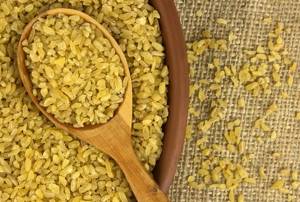
© Roman Fernati — stock.adobe.com
Benefits for the female body
Bulgur contains a large amount of folic acid, which is necessary for the female body. The vitamin concentration in 100 g of cereal is equal to the daily requirement. Regular consumption of porridge will replace synthetic vitamins in tablets. B9 is especially necessary for pregnant women; it promotes the full development of the fetus and has a general strengthening effect on the body of the expectant mother.
Bulgur is used in home cosmetology; various masks and scrubs are prepared from it to cleanse the skin of impurities and dead particles. Constant use of cereal will eliminate fine wrinkles and improve complexion. An effective anti-cellulite scrub based on bulgur.
Bulgur affects a woman’s appearance not only from the outside, but also from the inside. Eating porridge strengthens the hair structure, improves its silkiness and promotes rapid growth. The product slows down the aging process and allows you to maintain youth.
Benefits for men
The benefits of bulgur for men lie in the rich vitamin and mineral composition of the porridge. It is recommended to consume cereals during periods of intense physical activity and during intense training. This will relieve loss of strength and fill the body with the energy necessary for active life.
Porridge will strengthen bones and muscles and prevent the development of degenerative processes. And the high content of B vitamins will improve the condition of the nervous system, normalize sleep patterns and brain activity.
Cereals have a positive effect on the immune system, making it resistant to viruses and infections. The beneficial properties of bulgur will allow men to comprehensively strengthen the health of the body and increase performance.

© AlenKadr — stock.adobe.com
How is it different from other cereals?
Bulgur stands out among other cereals - even those that, like it, are made from wheat. The diet should be varied, so they all deserve attention. Everyone decides for themselves whether to make a choice in favor of bulgur or another grain in a particular case. To do this, you need to understand the differences between them.
Wheat porridge
A natural question arises: what is the difference between bulgur and wheat cereals if both porridges are made from the same raw materials. Here are some reasons in favor of the first:
- Heat treatment of grains, coupled with humidity, makes it more “whole grain”, balanced in composition. Despite the fact that the shell is then peeled off, in the early stages the beneficial substances from it have time to leak into the grain.
- It is lower in calories than regular wheat porridge.
- Its preparation takes less time, since it has already undergone preliminary heat treatment.
The grains taste similar, although bulgur is more delicate and crumbly; you can use it not only to make traditional porridges, but also add it to salads and stuff vegetables with it.
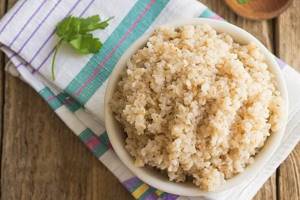
Wheat porridge
Pearl barley
Contrary to popular misconception, bulgur is not pearl barley. These cereals are made from completely different grains. From time immemorial, pearl barley has been made from barley by grinding the grains.
If you look closely, the grains are really different in appearance: pearl barley is more uniform in size, more regular in shape and lighter in color.
What is the difference between bulgur and pearl barley in terms of benefits for the body? Barley is nourishing and has a good effect on the gastrointestinal tract and cardiovascular system. It is somewhat poorer in composition, although it contains elements not found in bulgur: fluorine, chromium, cobalt and molybdenum.
Pearl barley is considered hard (it really becomes that way if cooked incorrectly), and it takes longer to cook.

Pearl barley
Couscous
The differences between couscous and bulgur lie in their composition. Bulgur consists only of durum wheat - sometimes crushed, but there are no impurities in the cereal. Couscous is more of a product, like pasta, which is also made from wheat flour.
Couscous is made from semolina. Semolina is also made from wheat, but of softer varieties. It is more industrially processed, so of all the grains, semolina is far from the healthiest. To obtain couscous, it is moistened and rolled in flour. It also contains corn starch.
Couscous tastes like millet, and bulgur is, of course, healthier.

Couscous grains
Rice
The domestication of rice occurred about 8 thousand years ago in East Asia, but for a long time it was not known in Central and Western Asia, India, the Mediterranean and some other regions where wheat was traditionally grown.
Let's look at how bulgur differs from rice:
- contains more vitamins and microelements;
- low glycemic index;
- It boils less and cooks faster.
When comparing, one cannot fail to note the traditional compatibility of these cereals with other products. So, rice is great with fish or chicken, while bulgur is good with red meat.
Spelled
Bulgur and spelled are made from the same grain - wheat. Therefore, this cereal also contains a lot of fiber, protein, B vitamins, iron, magnesium and other microelements. It was widely used in Ancient Rus' and recently, thanks to its rich composition, it has again begun to gain popularity among adherents of a healthy lifestyle.
So what is the difference between spelled and bulgur? What bulgur is made from and what spelled is made from are different varieties of wheat. The first is made from hard ones, the second from soft ones. Its benefits are determined by the fact that the grains are uncrushed and therefore retain their shell. It is very durable, difficult to separate, and serves as a reliable barrier against insects, so the cereal is stored for a long time. It is precisely because spelled is difficult to separate from the shells, as well as because of the low yield, that this unpretentious and healthy cereal was forced out of mass production and consumption.
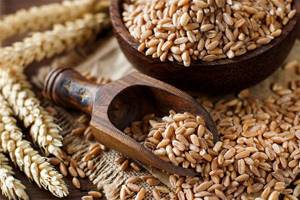
Spelled
Contraindications and harm
Bulgur can be harmful to people with gluten intolerance and grain allergies. Otherwise, it is a safe product if consumed in moderation.
Pregnant women, as well as people suffering from gastritis and stomach ulcers, should reduce their intake of porridge to once a week.
For those who have never tried bulgur dishes, we recommend being careful and observing the body’s reaction. Porridge can cause intestinal upset and flatulence.
Use in cooking

As noted above, bulgur has been used in cooking for more than four thousand years. During this time, culinary experts have invented many ways to prepare bulgur. However, to ensure that the finished dish does not disappoint, several important nuances should be taken into account.
Cooking correctly
The main guarantee that a bulgur dish will be tasty is the ability to cook this grain correctly.
First of all, keep in mind that, unlike many other grains, you should not soak bulgur before cooking. Yes, in the end it will cook much faster, but there is a high risk that the grains will overcook and you will end up with an unappetizing looking mess.
You can cook bulgur with either water or milk, depending on what dish you are preparing. Maintaining the correct proportion of liquid and grain plays a huge role. If you are preparing a side dish for vegetables, meat or fish, then use one part cereal to two parts water.
Cooking methods
There are many ways to prepare bulgur, but the most popular are cooking in a saucepan, in a slow cooker, in a frying pan and in the oven. Each of these options has its own nuances:
- To cook bulgur in a saucepan, take one part of the cereal and two parts of boiling water. Pour boiling water over the cereal, cover the pan with a lid and put on fire. As soon as the future dish boils, remove it from the heat. Without opening the lid, let the food brew for an hour. In this case, it is better to wrap the pan with a warm cloth. If you want the spicy aroma of the nut to be felt brighter, before cooking the bulgur, fry it in butter for five minutes.
- Cooking bulgur in a slow cooker is also very simple. Pour one part cereal into a bowl and fill it with two parts water. Close the lid and set the multicooker to the “Stew” mode for twenty minutes. Five minutes before the end of the specified time, add a little butter and stir.
- It is better to take a frying pan for cooking bulgur with a wide bottom and deep. Fill it with water and bring it to a boil. After the water boils, add salt, add spices if desired and add the cereal. Please note that the water should cover it completely, and the layer of liquid above it should be the same as a layer of porridge. Simmer over very low heat until the water has completely evaporated.
- One of the most labor-intensive ways to cook bulgur is in a pot in the oven. One part of the cereal is poured into the pot and two parts of water are poured. Place the container in an oven preheated to three hundred degrees. After half an hour, check to see if the water has boiled. If there is no liquid left, but the porridge is still too hard, you need to pour half a glass of water into it and stir. In fifteen to twenty minutes the dish will be ready.
Cooking "bride's soup" in Turkish
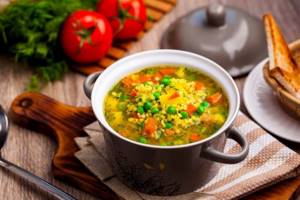
One of the legendary dishes of Turkish cuisine is bulgur soup, or, as it is called in this country, “bride’s soup.” According to custom, in order for family life to be happy, before the wedding the bride must prepare this dish for her relatives. Some supermarkets in Turkey even sell a special dry mix for this soup, which includes lentils, bulgur, spices and dried vegetables.
To prepare the “bride's soup” you will need the following ingredients: 150 g bulgur, 150 g red lentils, 2.5 liters of vegetable broth or water, one onion, two tablespoons of tomato paste, three tablespoons of dried paprika, the same amount of vegetable oil, tea a spoonful of dried mint and 10 peas of allspice.
Pour cold water or broth into the pan. Add lentils to it and bring to a boil. Then add the bulgur, which should first be fried in butter over high heat for five minutes. Add paprika and peppercorns, cover with a lid and reduce heat.
Fry the onion in vegetable oil until it becomes transparent. Then, adding tomato paste to it, simmer over low heat and pour the mixture into the pan. Add mint and salt there.
Cover the pan and let it simmer over low heat until the lentils and bulgur are tender. Once in the plate, sprinkle the dish with cilantro or parsley.
Cooking bulgur with vegetables
To prepare this dish you will need: 250 g of bulgur, one bell pepper, the white part of one leek, a clove of garlic, one eggplant, one tomato, three tablespoons of olive oil, a teaspoon of curry, a pinch of cinnamon, salt, ground black pepper, thyme and oregano to taste.
Cut the eggplant and pepper into medium-sized cubes. Also cut the tomato into cubes. Finely chop the garlic and cut the onion into thin rings.
Heat olive oil in a frying pan, add cinnamon and curry and heat for a minute. After this, add the vegetables and quickly fry them, stirring constantly, for seven minutes. Add oregano and thyme.
Add bulgur and mix thoroughly. After this, transfer the bulgur with vegetables into a ceramic pot and pour 0.5 liters of water into it. Stir, cover with foil and place in an oven preheated to 180 degrees for half an hour.
Cooking spicy vegetables with lemon bulgur
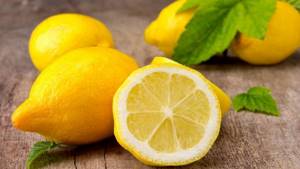
To prepare this dish you will need: 140 g of bulgur, two small eggplants, one bell pepper, two tablespoons of olive oil and liquid honey, a teaspoon of adjika, the juice and zest of half a lemon, five sprigs of fresh mint and thick Greek yogurt.
Cut the pepper in half. Remove the stem and seeds. Cut into large pieces. Cut the eggplants into cubes.
In a small bowl, mix honey, adjika and olive oil. Pour half the mixture over the vegetables and stir. Heat a grill pan over medium heat and grill the peppers and eggplant over medium heat for ten minutes until darkly charred.
Boil water in a saucepan and add bulgur to it. Add some salt. Cook for ten minutes. Then drain in a colander and transfer to a large bowl. Pour the remaining spice mixture over the porridge and squeeze in lemon juice.
Grate the lemon zest on a fine grater, coarsely chop the mint leaves and add to the bulgur. Stir. Place the bulgur on a platter, top with vegetables and serve with Greek yogurt.

